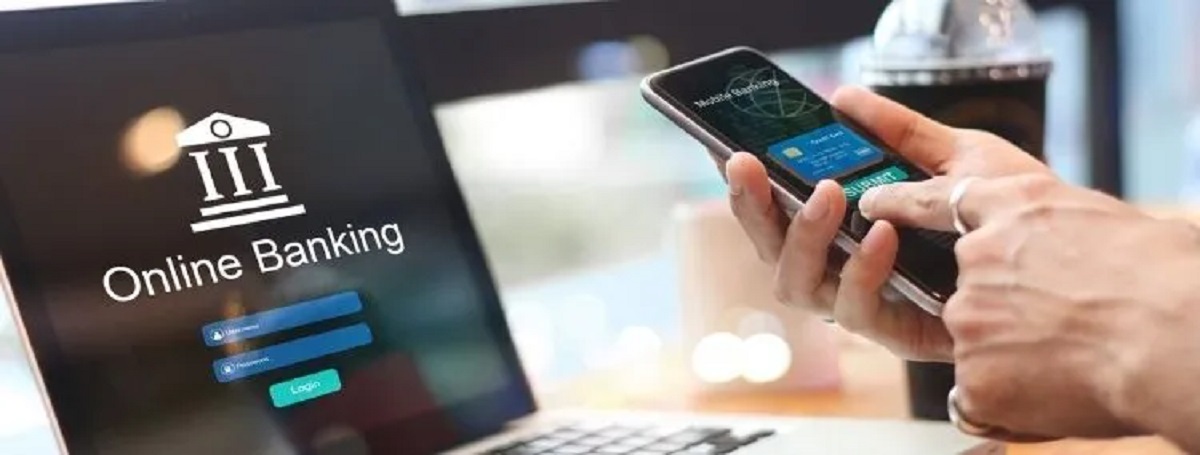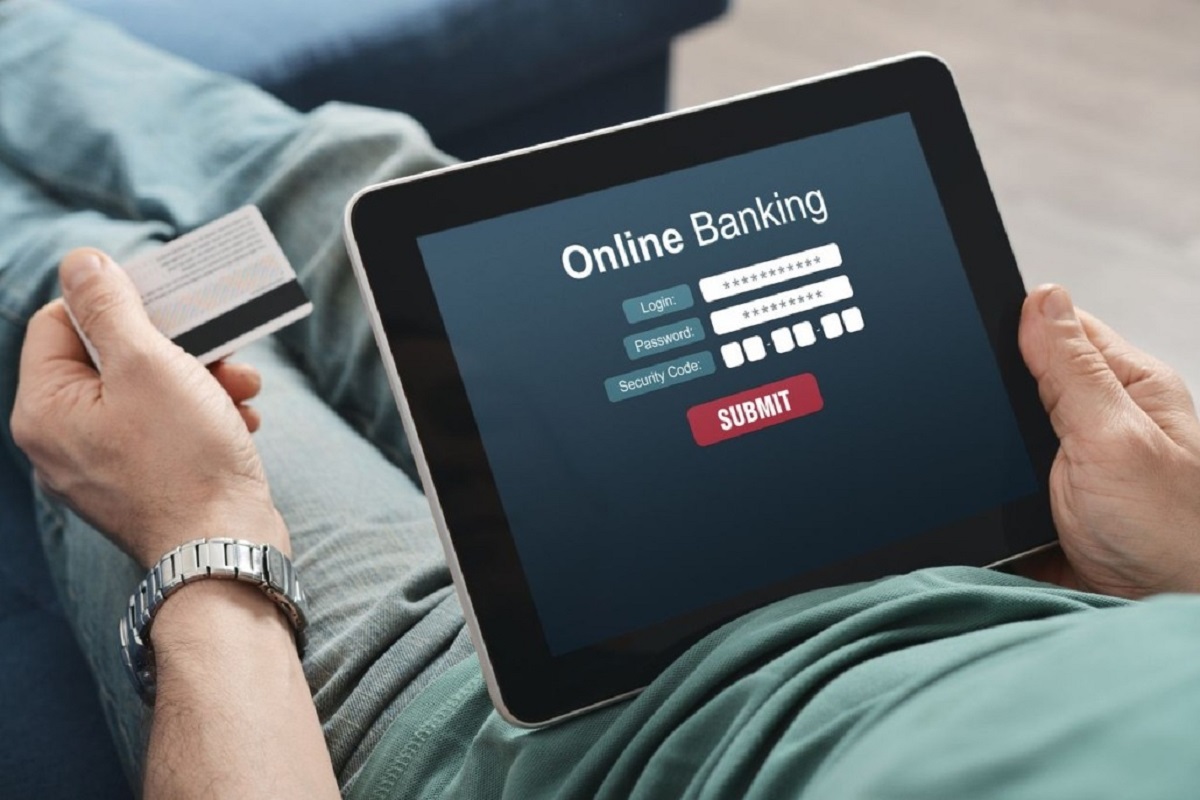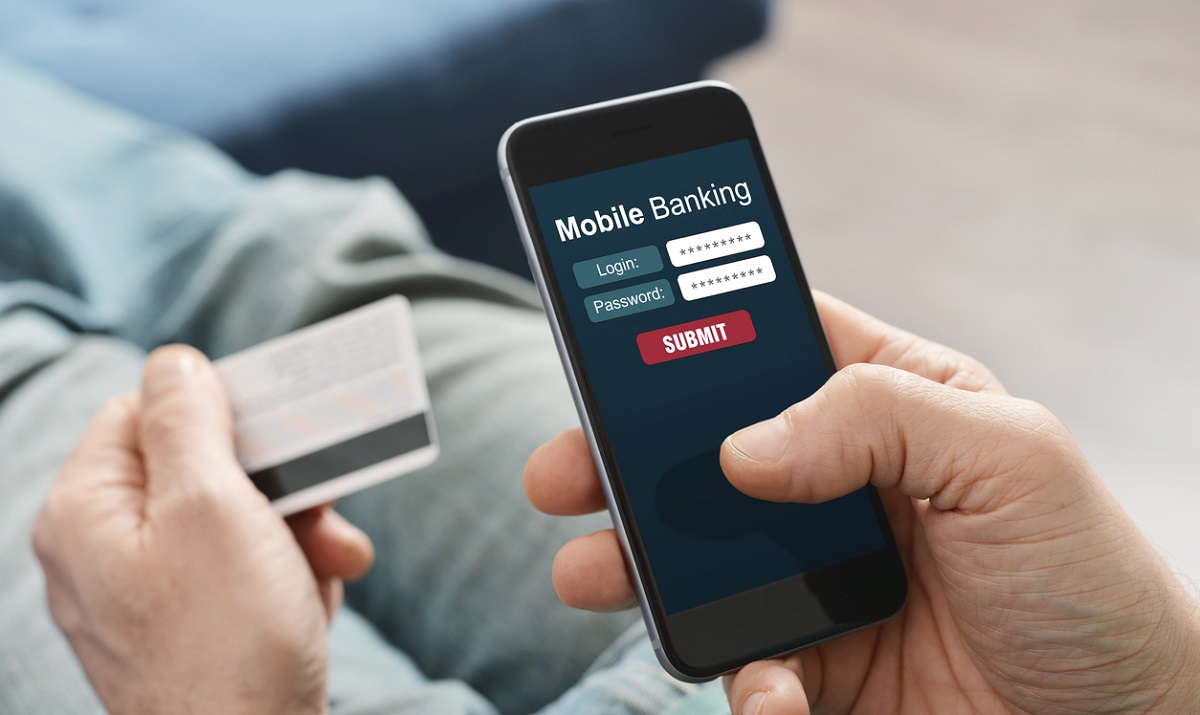Introduction
In today’s digital era, banking has become more accessible and convenient than ever before. With the advent of technology, traditional banking methods have evolved into various electronic platforms, offering customers the ability to manage their finances on the go. Two such popular platforms are mobile banking and internet banking. While these terms are often used interchangeably, they have distinct differences that set them apart.
Mobile banking refers to the use of smartphones or tablets to perform banking transactions and access financial information. On the other hand, internet banking, also known as online banking, allows customers to conduct banking activities through a desktop or laptop computer. Both mobile banking and internet banking offer similar services such as balance inquiries, fund transfers, bill payments, and account management. However, they differ in terms of accessibility, convenience, security, transactions, features, services, and user experience.
Understanding the differences between mobile banking and internet banking is crucial for individuals seeking to manage their finances effectively. In this article, we will explore these differences in detail in order to provide clarity on choosing the most suitable banking method for your needs.
Let’s dive into the world of mobile banking and internet banking and discover the unique features and benefits that each platform offers.
Definition of Mobile Banking
Mobile banking, also known as m-banking or SMS banking, refers to the ability to perform banking activities using a smartphone or tablet. With the help of dedicated mobile banking applications or through mobile web browsers, customers can access their bank accounts and manage various financial transactions.
The convenience of mobile banking lies in its portability and accessibility. Users can perform banking tasks anytime and anywhere, as long as they have a stable internet connection. Mobile banking applications are designed to be user-friendly, providing a seamless and intuitive experience for customers.
Mobile banking offers a wide range of features and services. Customers can check their account balances, view transaction history, transfer funds between accounts, pay bills, set up automatic payments, deposit checks by taking a photo, and receive real-time notifications for account activities. Some mobile banking apps also provide additional services such as personal financial management tools, budgeting features, and investment tracking.
Security is a crucial aspect of mobile banking. Financial institutions implement various security measures to protect customers’ sensitive data and transactions. These measures include encryption, secure login processes, biometric authentication (such as fingerprint or facial recognition), and transaction verification through one-time passwords or token-based authentication.
Mobile banking has become increasingly popular due to its convenience and flexibility. It allows users to have complete control over their finances without the need to visit a physical branch. Whether it’s checking account balances while waiting in line, transferring funds during travel, or paying bills on the go, mobile banking truly empowers customers to manage their money efficiently and stay connected with their financial institutions.
In summary, mobile banking offers a convenient and accessible way for customers to perform various banking activities using their smartphones or tablets. With its user-friendly interfaces, wide range of features and services, and robust security measures, mobile banking has revolutionized the way individuals manage their finances.
Definition of Internet Banking
Internet banking, also referred to as online banking, enables individuals to perform banking activities through a desktop or laptop computer connected to the internet. It allows customers to access and manage their bank accounts and conduct various financial transactions remotely.
One of the key advantages of internet banking is its accessibility. Users can log in to their online banking accounts using secure credentials provided by their financial institution. This provides the ability to access banking services 24/7 from the comfort of their own homes or offices. Internet banking is not limited by the need for a specific device or operating system; as long as users have an internet connection and a compatible web browser, they can easily access their accounts.
Internet banking offers a wide range of convenient services. Customers can check their account balances, view transaction history, transfer funds between accounts or to other individuals, pay bills online, and set up recurring payments. Some online banking platforms also offer additional features such as requesting new checkbooks, updating personal information, and applying for loans or credit cards.
Security is a top priority in internet banking. Banks employ multiple layers of security measures to protect their customers’ information and transactions. These include secure socket layer (SSL) encryption, two-factor authentication, and timed logouts to ensure the safety of financial data during online interactions. Additionally, many banks have implemented transaction monitoring systems that help detect and prevent fraudulent activities.
Internet banking provides a convenient way for customers to manage their finances remotely. Users can perform most banking tasks without the need to visit a physical branch. This not only saves time but also reduces the need for paper-based transactions, making it an environmentally friendly option.
In summary, internet banking allows individuals to access and manage their bank accounts and conduct a wide range of financial transactions through their computers and an internet connection. With its convenient accessibility, extensive services, and robust security measures, internet banking has transformed traditional banking and empowered customers to take control of their finances from anywhere and at any time.
Accessibility
When it comes to accessibility, mobile banking and internet banking offer different options for users to access their accounts and perform banking activities.
Mobile banking provides unparalleled convenience and accessibility. With the widespread availability of smartphones and tablets, customers can access their accounts through dedicated mobile banking applications or mobile-friendly websites. This enables them to perform banking tasks anytime, anywhere, as long as they have an internet connection. Mobile banking allows users to have their accounts at their fingertips, whether they are commuting, traveling, or sitting in the comfort of their own homes.
On the other hand, internet banking provides access to bank accounts through desktop or laptop computers connected to the internet. Users can access their online banking platforms by logging in and securely navigating the bank’s website. Internet banking is not constrained by the limitations of mobile devices and allows for a larger screen size, which can be beneficial for users who prefer a more comprehensive and detailed view of their banking information.
While both mobile banking and internet banking offer accessibility, mobile banking excels in terms of convenience and on-the-go access. With mobile banking, users can quickly perform transactions and manage their finances with a few taps on their smartphone screens. Internet banking, while still convenient, may require users to have access to a computer, which may not always be readily available.
It’s worth noting that while both platforms provide accessibility, there may be variations in the availability of certain features or services. Some financial institutions may offer additional features exclusively on their mobile banking applications, while others may prioritize certain enhancements on their internet banking platforms. It’s important for users to check with their specific banks to understand the full range of services available on each platform.
In summary, both mobile banking and internet banking offer accessibility to customers, allowing them to manage their accounts and perform banking transactions. Mobile banking provides the advantage of on-the-go access through smartphones or tablets, while internet banking offers a wider screen experience through desktop or laptop computers. Understanding the accessibility options provided by each platform can help users choose the most suitable banking method based on their preferences and lifestyle.
Convenience
Convenience is a key factor when it comes to choosing between mobile banking and internet banking. Both platforms offer a range of features and services that enhance the banking experience for customers.
Mobile banking provides unparalleled convenience due to its portability and accessibility. With a smartphone or tablet, users can perform banking activities anytime and anywhere, as long as they have an internet connection. The availability of dedicated mobile banking applications makes it easier for customers to access their accounts and perform transactions with just a few taps on their device screens. Whether it’s checking balances, transferring funds, or paying bills, mobile banking offers the convenience of managing finances on the go.
On the other hand, internet banking also offers a high level of convenience for customers. Users can access their accounts through desktop or laptop computers, providing a larger screen and a more comprehensive view of their banking information. Internet banking allows for multiple tabs or windows to be opened simultaneously, enabling users to multitask and perform various transactions simultaneously, such as checking account balances while paying bills. Additionally, internet banking platforms often offer advanced features such as personal financial management tools and spending analysis, providing customers with insights to better manage their finances.
Both mobile banking and internet banking reduce the need for physical visits to bank branches, saving customers time and eliminating the hassle of waiting in line. Users can conveniently perform transactions and access account information from the comfort of their own homes or offices. This convenience has become increasingly important, especially in today’s fast-paced world, where individuals are looking for ways to efficiently manage their financial tasks amidst their busy schedules.
While both platforms offer convenience, it’s important to consider individual preferences and circumstances. Mobile banking is ideal for users who are constantly on the move and prefer to have quick access to their accounts at their fingertips. On the other hand, internet banking may be more suitable for users who prefer a larger screen and a more detailed view of their financial information.
In summary, both mobile banking and internet banking provide convenience by allowing customers to access their accounts and perform banking transactions without the need for physical visits to a bank branch. Mobile banking offers the convenience of on-the-go access through smartphones or tablets, while internet banking provides a larger screen and the ability to multitask. Choosing the most convenient banking method depends on individual preferences and the specific financial tasks users need to accomplish.
Security
When it comes to managing finances, security is of utmost importance. Both mobile banking and internet banking prioritize the protection of customer information and transactions by implementing robust security measures.
Mobile banking platforms employ various security measures to ensure the safety of customer data. These include secure login processes, encryption, and authentication methods such as biometrics (fingerprint or facial recognition) or passcodes. Mobile banking apps often provide an added layer of security by implementing device-specific identification or token-based authentication. Additionally, many banking apps offer the ability to remotely lock or wipe data in the event of a lost or stolen device. These security features are designed to prevent unauthorized access to customer accounts and protect sensitive information.
Internet banking platforms also prioritize security and employ similar measures to protect customer data. This includes secure socket layer (SSL) encryption, which ensures that data transmitted between the user’s computer and the bank’s servers is encrypted and cannot be intercepted. Internet banking also utilizes strong authentication systems, such as two-factor authentication, to verify the identity of users during login. Session timeouts and automatic logouts help protect against unauthorized access in case of inactivity. Banks also have stringent monitoring systems in place to detect and prevent fraudulent activities.
It’s important for customers to follow security best practices when using both mobile and internet banking platforms. This includes using secure and unique passwords, not sharing login credentials with anyone, and keeping devices and banking apps up to date with the latest security patches. Being cautious of phishing attempts and avoiding accessing banking platforms through unsecured public Wi-Fi networks also helps mitigate potential security risks.
In summary, both mobile banking and internet banking prioritize the security of customer information and transactions. Mobile banking apps employ secure login processes, encryption, and authentication methods, while internet banking platforms utilize SSL encryption and strong authentication systems. Customers can play an active role in enhancing security by following best practices and being vigilant of potential risks.
Transactions
When it comes to performing transactions, both mobile banking and internet banking offer a wide range of options for customers to manage their finances.
Mobile banking allows users to perform various transactions directly from their smartphones or tablets. These transactions include transferring funds between accounts, making bill payments, sending money to other individuals, and even depositing checks by taking a photo through the mobile banking app. Mobile banking apps often provide real-time transaction notifications, allowing users to stay updated on their financial activities.
Internet banking platforms also offer a comprehensive set of transactional capabilities. Users can transfer funds, pay bills online, set up recurring payments, and make external account transfers. Internet banking platforms often provide options to schedule future-dated transactions, allowing users to manage their payments and funds efficiently. Some internet banking platforms may also offer additional services such as requesting new checkbooks or applying for loans or credit cards.
Both platforms prioritize security when it comes to transactions. Mobile banking apps and internet banking platforms implement multiple layers of authentication and encryption to protect customer information during transactions. This ensures that the transfer of funds and sensitive data remains safe and secure.
One factor to consider when choosing between mobile banking and internet banking is the transaction limits and capabilities offered by each platform. While most routine transactions can be performed on both platforms, there may be variations in terms of transaction limits and additional features. Some complex transactions, such as wire transfers or international transactions, may require additional security measures and may be better suited for internet banking platforms.
It’s important for customers to review and understand the transactional capabilities of their specific mobile banking or internet banking platform. This ensures that their banking needs, such as the ability to transfer funds or make certain types of payments, can be met effectively.
In summary, both mobile banking and internet banking platforms offer a wide range of transactional capabilities to customers. Mobile banking allows users to perform transactions directly from their smartphones or tablets, while internet banking platforms provide comprehensive options for various financial transactions. Understanding the transaction capabilities of each platform can help users choose the most suitable banking method based on their transactional needs.
Features and Services
Mobile banking and internet banking platforms offer a variety of features and services to enhance the banking experience for customers. These features and services differ slightly between the two platforms, catering to the unique needs of users.
Mobile banking offers a range of features that leverage the capabilities of smartphones and tablets. Users can check their account balances, view transaction history, transfer funds between accounts, pay bills, and set up automatic payments. Mobile banking apps often provide additional features, such as financial management tools that help users track their expenses and set budgets. Some apps even offer investment tracking and the ability to monitor credit scores. Push notifications are another common feature that keeps users informed about account activities and important updates.
Internet banking platforms also offer a comprehensive set of features and services. Users can access account balances, view transaction history, transfer funds, pay bills online, and set up recurring payments. Internet banking may provide additional services, such as the ability to request new checkbooks, update personal information, apply for loans or credit cards, and view electronic account statements. Some platforms also include personal financial management tools that assist users in tracking expenses and setting financial goals.
It’s worth noting that certain features or services may be more prominent or tailored to specific platforms. For example, mobile banking apps often emphasize mobile deposit capabilities, allowing users to deposit checks by taking a photo of the check using their smartphone’s camera. On the other hand, internet banking platforms may prioritize detailed transaction categorization and analysis, providing users with insights into their spending patterns.
The availability of features and services may also vary between banks and financial institutions. Some institutions may have more advanced mobile banking or internet banking platforms that include exclusive features or integration with third-party services, such as budgeting apps or personal finance software.
In summary, both mobile banking and internet banking platforms offer a range of features and services to enhance the banking experience for customers. Mobile banking leverages the capabilities of smartphones and tablets, providing users with tools for managing their finances on the go. Internet banking offers a comprehensive set of features, often with additional capabilities such as detailed transaction analysis and account management services. Assessing the specific features and services available on each platform can help users choose the banking method that aligns with their individual financial needs and preferences.
User Experience
The user experience is a crucial aspect when considering mobile banking and internet banking. Both platforms aim to provide customers with intuitive interfaces and seamless interactions.
Mobile banking apps are designed specifically for smartphones and tablets, focusing on a streamlined user experience optimized for small screens. The interfaces are often visually appealing and user-friendly, offering easy navigation and quick access to essential banking functionalities. Mobile banking apps make use of touch gestures and provide a smooth and responsive experience. The limited screen space is efficiently utilized to present key information and actions, allowing users to perform transactions and view account details with ease.
On the other hand, internet banking platforms cater to larger screens and provide a more comprehensive view of banking information. The interfaces are designed to accommodate a variety of devices, allowing users to access their accounts from desktop or laptop computers. Internet banking platforms may offer more detailed information and options on a single screen, allowing users to manage multiple transactions simultaneously. While the layout may differ between platforms, the focus is on providing users with a clear and organized view of their financial data.
Both mobile banking and internet banking platforms prioritize responsiveness and speed. Transactions and information retrieval are designed to be quick and seamless, enhancing the overall user experience. Notifications, whether through mobile banking apps or internet banking platforms, aim to keep users informed about important account activities and updates in real-time.
Accessibility features are also taken into consideration for both platforms. Mobile banking apps often include options for font size adjustments, color contrasts, and assistive technology compatibility to accommodate users with visual impairments. Internet banking platforms typically have similar features, ensuring that users with accessibility needs can access and manage their accounts effectively.
In terms of personalization, both mobile and internet banking platforms allow users to customize their settings and preferences. Users can often choose to receive alerts and notifications, set up recurring payments, and manage beneficiary details. This flexibility enhances the user experience by tailoring the banking services to meet individual needs and preferences.
In summary, both mobile banking and internet banking platforms prioritize user experience by providing intuitive interfaces, streamlined interactions, and responsive design. Mobile banking focuses on smartphone and tablet optimization with visually appealing and user-friendly interfaces. Internet banking caters to larger screens, offering a comprehensive view of banking information. Both platforms emphasize responsiveness, speed, and personalization options to ensure a seamless and user-centric banking experience.
Summary
Mobile banking and internet banking have revolutionized the way individuals manage their finances. These digital platforms offer convenience, accessibility, and a wide range of features and services to meet the diverse needs of customers.
Mobile banking, accessed through smartphones or tablets, provides on-the-go access and flexibility. With user-friendly interfaces and real-time notifications, users can conveniently perform transactions, check account balances, and manage their finances anytime and anywhere. Mobile banking offers the convenience of banking in the palm of your hand, ideal for users who are always on the move.
Internet banking, accessed through computers connected to the internet, offers a broader screen experience and the ability to multitask. With comprehensive features and services, users can perform various financial transactions, view account information, and customize their settings. Internet banking is well-suited for those who prefer a more detailed view of their financial data and the convenience of managing multiple transactions simultaneously.
Both platforms prioritize security, implementing robust measures such as encryption, secure login processes, and two-factor authentication to protect customer information and transactions. It’s essential for users to follow security best practices and remain vigilant to mitigate potential security risks.
Mobile banking and internet banking provide a wide range of transactional capabilities, allowing users to transfer funds, pay bills, and perform other financial tasks seamlessly. Certain complex transactions, such as wire transfers or international transactions, may be better suited for internet banking platforms due to additional security measures and capabilities.
Overall, mobile banking and internet banking enhance the banking experience by offering convenience, accessibility, security, and a variety of features and services. Understanding the differences between the two platforms enables users to choose the most suitable banking method based on their preferences, lifestyle, and transactional needs.

























